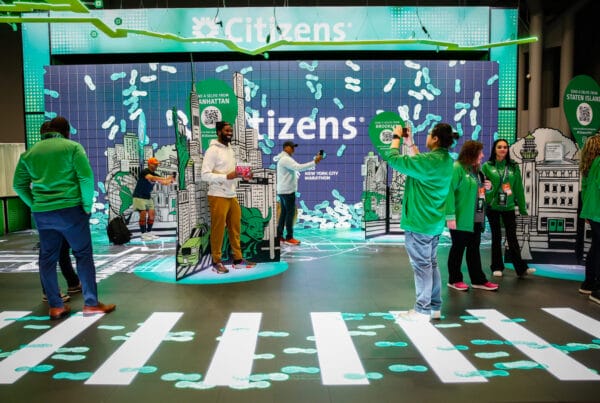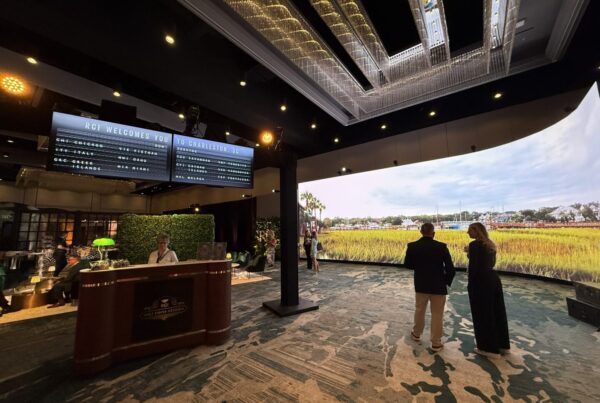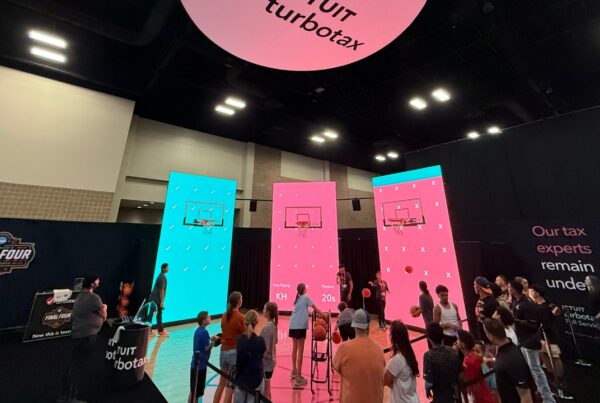The face of trade shows is changing. After what felt like an eternity of walking show floors filled with booths designed to look like billboards, we’re starting to see much more interesting concepts come to life. Contextual designs that place the audience into a relevant setting. Entertaining designs that bring some fun into the mix. These are immersive themes that take over the space to attract and engage audiences. It’s exciting when you stumble across one of these booths — for both attendees and the exhibitor. For many of these new event setups, there is a branded game at the center of it all. So we ask, what’s driving this change?
For many marketers the idea of having a low throughput game at an event doesn’t make much sense. It makes even less sense when you consider that most attendees aren’t going to be inclined to engage in gameplay. Yet despite all of that, event games work really well as a marketing tactic at events. This is largely driven by our affinity to “people watch.” Our inquisitive nature causes an interesting one-to-many effect, where just one person (an attendee or the exhibitor) engaged with a game inevitably causes others to gather, pause, and watch. This presents marketers with a few extremely favorable outcomes.
- Attraction. The intrigue to see what’s going on can quickly cause a crowd to gather. A crowd will immediately create additional draw, resulting in more traffic. This is a force multiplier that can quickly help pull attendees your way.
- Dwell time. The attraction and entertainment are great, but cause something even more valuable: increased dwell time. Games create a captive audience that your brand team can engage in conversation. While not every attendee will play the game, your customer touchpoints end up increasing because customers are hanging around long enough to be engaged.
- Positive experience. For many customers, today’s currency is the experience they have. Branded games deliver on paying in experience in two ways: 1) the game itself for the player, and 2) the experience for others watching. We tend to always remember what brought us a smile.
So why are these games being used as the centerpiece? You can certainly add a brand game as just one element of a space, and it can definitely make an impact. But it’s also more at risk to get lost in the noise and overlooked by your audience. Brands who engage gameplay at events as the focal point experience a much bigger return on the investment. That’s because it’s near impossible to miss what’s happening, leading to attraction, dwell time, and a positive brand experience.
Next up: We’re digging into some of the different experiences we’ve seen, exploring a few types of gameplay, and looking at the tech that drives it.
Have questions about how you can game up your event? Reach out!











